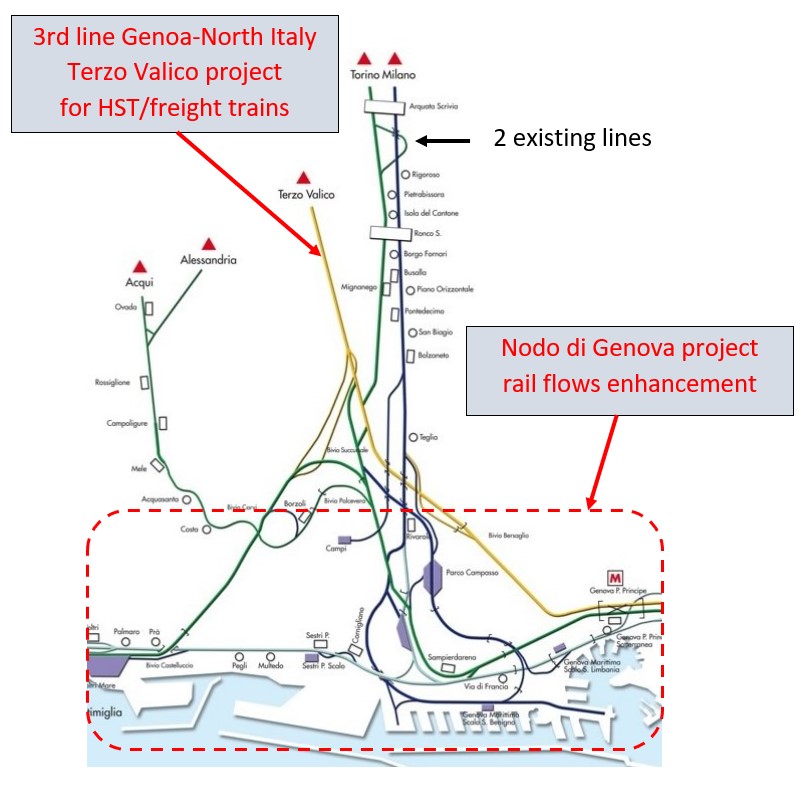The Terzo Valico project is a new high-speed line that strengthens the connections of the Genoese port complex with the main railway lines of northern Italy and Europe. It is complemented within the city of Genoa by a reconfiguration of the railway network.

The context
In 2017, the port of Genoa City handled almost 2.7 million TEUs (Twenty-Foot Equivalent Units). The collapse of the Morandini Bridge in August 2018 caused traffic to drop to 1.5 million TEU. Access to the port was at risk due to the lack of a strategic infrastructure for regional mobility, but it was also a warning signal that had repercussions in many areas, starting with employment. In the third quarter of 2018, INPS was already reporting a decrease of 5,000 jobs in Liguria compared to the previous year, explaining this contraction by the bridge collapse, although there may have been other factors at play.
Reversing this negative spiral became the main reason for speeding up the major works needed to connect Genoa to its hinterland and to northern and eastern Europe.
Connection
The objective of Genoa, a large container port but also the 6th largest city in Italy with 575,000 inhabitants, is to be better connected to Lombardy and Piedmont. One of the priorities is to be connected to the Lyon-Turin project and to facilitate access for flows to France, Great Britain and the Benelux countries.
This connection is also part of the Rotterdam-Genoa corridor, which is one of the corridors of the strategic trans-European transport network (TEN-T core network) that links the most densely populated and industrial regions of Europe.
The other priority is rapid access to high-speed rail and to Milan. Italy’s high-speed network is a T-shaped network covering all major Italian cities, with the notable exception of Genoa, which is a very deep conurbation. The topography of the area makes it difficult to build new transport networks without major underground works to the edge of the flatter Lombardy region.
It is interesting to note the priority of focusing on Milan and Turin rather than the country’s capital, Rome, which is admittedly further away.
Two projects
Welcoming the high-speed train and making both regional traffic and international rail freight more fluid implies the implementation of two distinct but closely linked projects:
- The Terzo Valico project, which consists of adding a third line (in yellow) to the two already existing. The Terzo Valico project, which consists of adding a third line (in yellow) to the two existing ones;
- The Nodo di Genova project, which is complementary and consists of a reconfiguration of the tracks between the two major Genoa stations to obtain an optimal separation of mainline / regional / freight flows.
